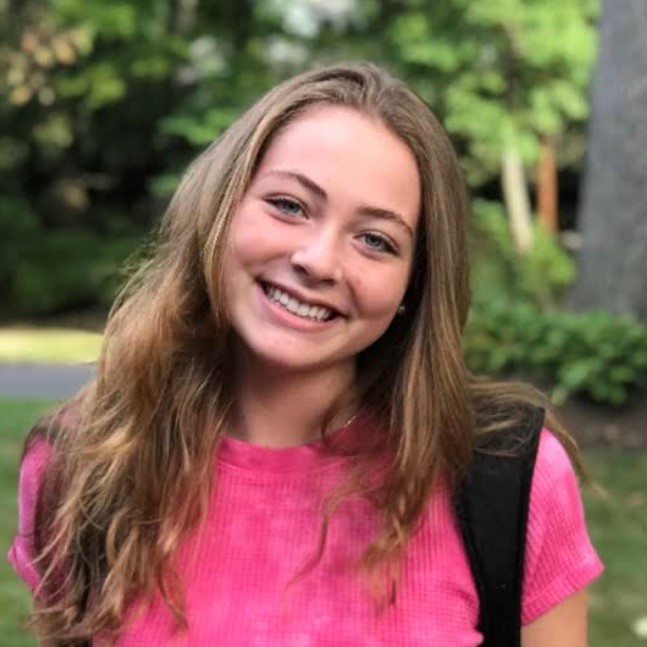Ella Harshman
Ella Harshman - Class of 2022

Summer of 2020
Ella Harshman spent much of the past few months working alongside her mentor on an innovation in placental pathology that could have a significant positive impact on pregnant women and their fetuses.
Currently, her mentors work – which Harshman has provided assistance with – is focused on a new placental measure, obtained by collecting and aligning images of the whole placenta into a three-dimensional mesh.
Harshman analyzed approximately 300 3-D ultrasound scans and oriented them using a program called MeshLab. The goal was to determine how much variability in birthweight could be predicted by placental features captured by these 3D meshes, and how much additional insight they could give into placenta structure and function.
“My research found that placenta features captured by the 3D placental meshes do, in fact, provide much more predictive value for variability in birthweight as well as increased information regarding placental structure than past research,” Harshman said. ”These findings are extremely exciting; they could eventually allow doctors to monitor placental and fetal growth and intervene during pregnancy to help the placenta without causing harm to the fetus.”
Summer of 2021
Diagnosing and starting interventions for autism before a child turns 2 years old can yield the most significant, long-term benefits. However, the average age for an autism diagnosis in America is 4 years old or older. This led New Rochelle High School senior Ella Harshman to consider the possibility of earlier autism detection through examination of the placenta.
“My research explores the relationship between villus packing density (VPD) in the placenta and autism spectrum disorder (ASD),” said Harshman. The villus packing density measures the amount of villus in a certain area. Villus, which is the plural term for villi, are tiny, slender structures that increase a membrane’s surface area.
The project involved examining different placental tissue samples from children both with and without ASD. Harshman looked at multiple regions of the placenta with a microscope and examined villus quantity before capturing images of particularly interesting regions.
“For each image, I captured three regions of interest (ROIs) that best represented VPD in that placenta,” she said.
Harshman then used MATLAB, a computer programming language used for data analysis, to convert her findings into an easy-to-read numerical value. “These ROIs were exported into MATLAB, where VPD was computed as the percentage of an image that contained villi and converted into a numerical value,” she said.
Her research yielded some eye-opening results, particularly when it came to the gender of the subjects. While the difference in VPD distributions among males was minimal, females with ASD showed an uneven distribution of VPD throughout the placenta.
Harshman has always had an interest in neurodevelopmental disorders. This particular subject hit close to home; she knows people who’ve experienced severe pregnancy complications.
She plans to continue this research throughout the year with help from her mentor, Dr. Carolyn Salafia.
“The foundation I have built in perinatal pathology, as well as the communication and problem-solving skills I have developed through this program, will benefit me as I move toward conducting research in college and beyond,” said Harshman.
Moreover, the Science Research Program allowed her to work alongside talented people with a shared interest in science.
“I am very grateful to the Science Research Program for introducing me to a group of people who have been a valued source of guidance, inspiration, and knowledge over the past three years,” she said.
